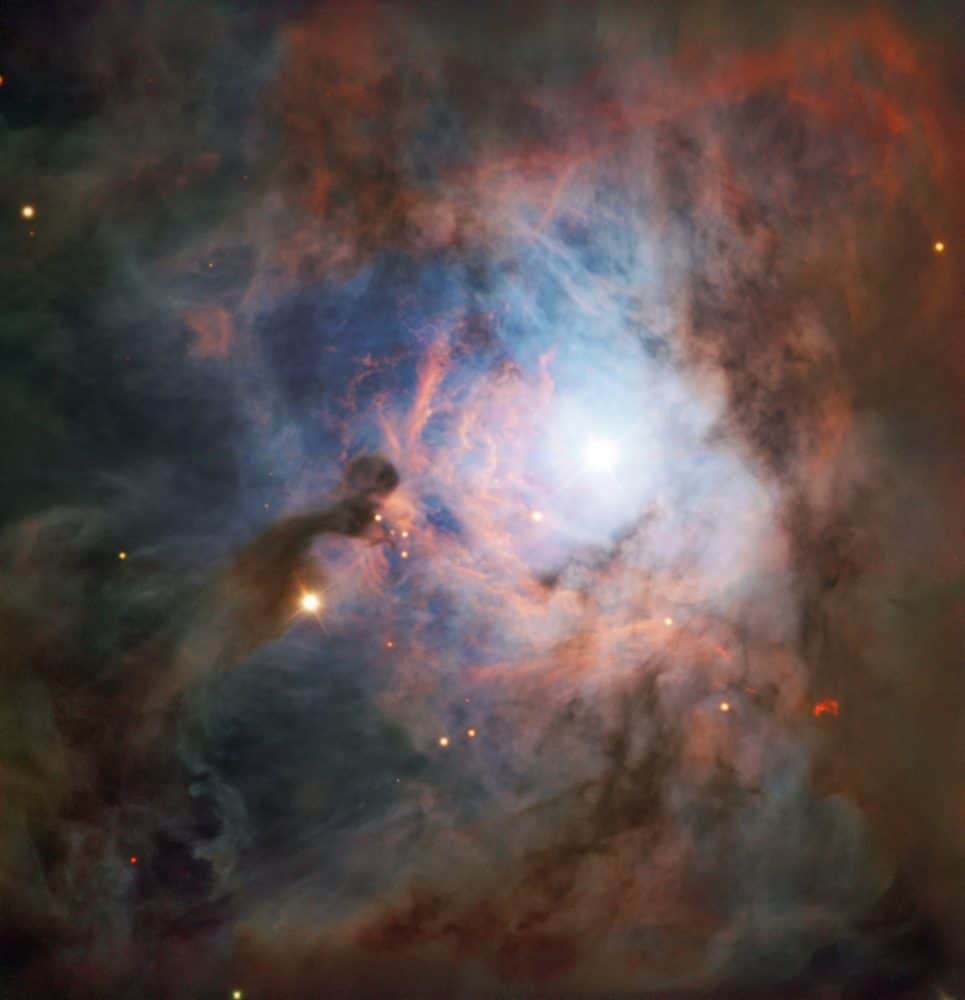The Cosmos with NGC 2023
Reflection nebulae are clouds of interstellar dust that reflect the light from nearby or internal sources, like fog around a car headlight.
NGC 2023 is one of the largest reflection nebulae in the sky.
Also known as LBN 954 or IRAS 05391-0217, the nebula was discovered by the British astronomer William Herschel on January 6, 1785.
The object is about 1,500 light-years away from Earth, very close to the well-known Horsehead and Flame nebulae.
NGC 2023 is illuminated by a massive young star named HD 37903.
The star is extremely hot — several times hotter than the Sun — and its bright blue-white light causes NGC 2023’s milky glow.
Such nebulae are often the birthplaces of stars, and contain a clumpy distribution of gas that’s significantly denser than the surrounding medium.
Under the influence of gravity, these clumps attract one another and merge, eventually creating a new star.
This new image of NGC 2023 was taken with VLT’s FOcal Reducer and Spectrograph (FORS) instrument as part of the ESO Cosmic Gems program.
This initiative produces images of interesting and visually attractive objects using ESO telescopes, for the purposes of education and outreach.
